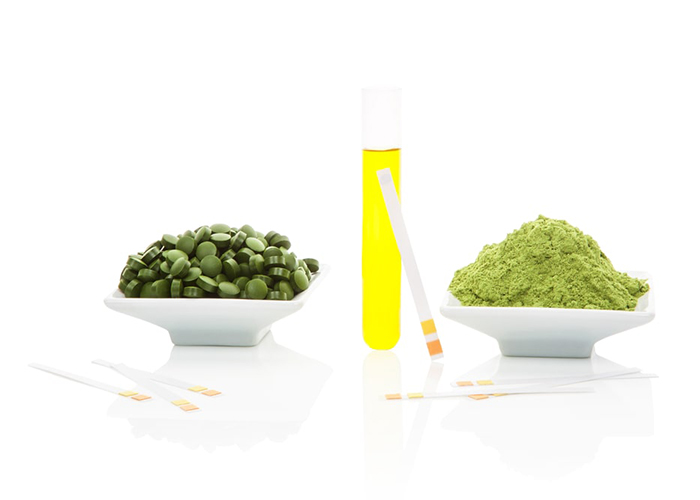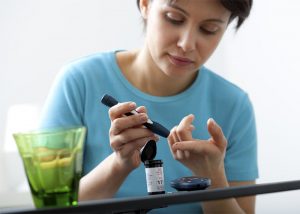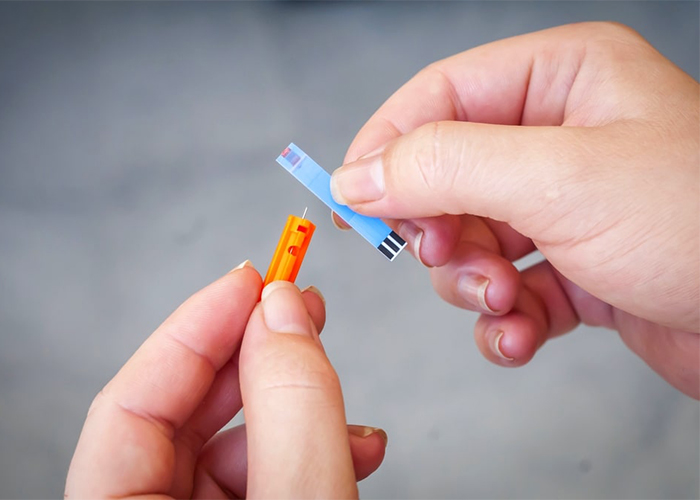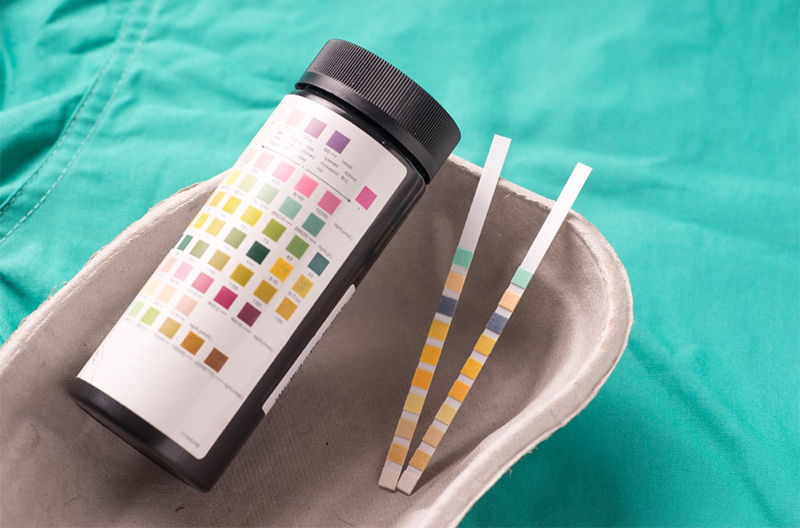Are you on the Ketogenic diet? If you’re following this meal plan accurately, you may be wondering when your body will enter ketosis. One way in which you can track your journey is to use ketosis strips. Haven’t heard of these tests yet? You’ve come to the right place. Here’s everything you need to know about how they can aid your diet plan.
What are Ketosis Strips?

Have you ever wondered how long it takes to get into ketosis? Using some testing strips could be the answer. These are, essentially, tests that you can do at home to check your ketone levels. Since these molecules are detectable both in your blood, breath, and urine, you can get different types of strips to check them.[1]
Specifically, you can either choose between a urine or blood test. Which you decide to use will depend largely on your lifestyle, your personal preference, and what point you are at with your diet plan. For that reason, you should take some time to learn about the different strips and figure out what will work best for you. We have provided a handy guide below about urine vs blood ketosis test strips to help you decide.
Should I Use Ketosis Strips?
Thinking about giving the tests a whirl for yourself? When you first start out on the Ketogenic diet, you may find it hard to get into ketosis. If you’re having this issue, monitoring your ketone level with ketosis strips could help you get into the swing of things. That way, you can see whether your meal plan is working and decide whether you need to adjust it.
Urine Vs Blood Ketosis Test Strips
Before we go any further, there’s something you should know. There are two types of ketosis strips that you can get. You should determine which one works for you ahead of time so that you know which ones to buy. Here’s what you need to know about each of them to help you make your decision.
1. Urine Ketosis Strips

Urine ketosis strips are exactly what they say on the tin. You can get the strips over the counter at your local drug store. Failing that, you can also buy the strips online from reliable sources, and so it’s worth shopping around.
Put simply, the strips allow you to test the ketone levels in your body by urinating on them. Interestingly enough, the strips were originally created for patients who have type 1 diabetes. The ketosis test strips allowed them to determine whether they had a risk of diabetic ketoacidosis.[2] However, they are now available to everybody. Arguably, using urine-based ketosis strips is the most convenient way to check your levels.
2. Blood Ketosis Strips

There is also another option that you should also consider here. Research suggests that blood-based ketosis strips are a highly reliable way to test your ketone levels.[3]’ [4] The tests work in a similar way to the urine strips and can be used in the comfort of your own home. You can also buy these ketosis strips online or at a drugstore.
As a quick word of warning, these strips are not for the faint of heart. If you happen to be anxious about using needles, you may want to steer clear of this particular option. To conduct the test at home, you will need to prick your finger using a needle and draw blood. Should the thought of that make you uncomfortable, the urine keto strips may be better.
What’s more, using blood Ketosis strips may work out to be more expensive than the urine strips. The reason for that is that you need to buy specialist equipment (i.e. a lancet and needle) to test your blood ketone levels. You should always weigh up your options here.
What Color Should My Ketosis Strip Be?
Now that you’ve gained an understanding of what ketosis strips are, let’s talk about how you should use them. You read Keto strips by taking a look at their color after they have been in contact with your bodily fluids. When you first get the strips, they should be white. After you have used them, they will change color. These tones can vary from pale cream to pink to deep purple. Here’s a quick breakdown:
- Light cream color: Low to zero levels of ketones
- Pink tones: Medium levels of ketones
- Dark purple: High levels of ketones
Needless to say, some ketosis test strips will vary from these rules. Before you use any test, you should ensure that you read the instructions in full. Doing so is the only way to make sure that you are testing your levels correctly and getting an accurate result.
How to Use Ketosis Strips in 4 Simple Steps

Next up, let’s get down to how you use the ketosis strips. The good news is that these home tests won’t take you very long at all. Of course, you should wash your hands well before you get started with these tests. Here’s a quick and easy rundown of how you should use each of them in just four steps.
Urine Ketosis Strips
- Use a small and clean container to take a urine sample.
- Dip the end of the ketosis strip into the sample and leave it for a few seconds before removing it.
- Leave the Keto strip for a predetermined amount of time. Check the packaging of the test for your specific time frame.
- Compare the color of the ketosis strip with your color chart to check your level. Dispose of the strip and then make sure that you wash your hands well.
Pro Tip: Checking your ketone levels each day? Ensure that you pick the same time so that you gain the most accurate reading.[5]
Blood Ketosis Strips
- Put the needle into the lancet and pop the Keto strip into the meter.
- Stick the end of the needle into your finger and draw some blood.
- Make sure that the blood and the ketosis strip touch one another.
- Leave for a predetermined amount of time and then read the results.
Pro Tip: Make sure that you read the directions on your blood ketosis strips packaging as they may differ.
How Effective Are They?
When you’re first starting out on the meal plan and starting to notice the initial ketosis symptoms, you want an accurate way to measure your levels. As we have already mentioned, both types of ketosis strips are accurate.[6]
However, the urine Keto strips may be more useful when you first start your diet. The reason is that this is when you’re most likely to urinate out your ketones as your body cannot use them yet.[7]’ [8] That’s why you may want to use the urine keto strips at first and then move onto the blood tests at a later date. Simple.

Conclusion
What are you waiting for? There’s no doubt that using ketosis strips could help aid your diet and ensure that you’re on the right track. Should you find that you have low ketone levels after following the diet, you may need to adjust it somewhat. Now that you’ve got all the details about the strips, you can go ahead and get started. Why not search for the tests online and give them a go?
References
- [1] https://www.ncbi.nlm.nih.gov/pmc/articles/PMC4471925/
- [2] https://www.ncbi.nlm.nih.gov/pubmed/9174517
- [3] https://www.ncbi.nlm.nih.gov/pubmed/23330615
- [4] https://www.ncbi.nlm.nih.gov/pubmed/20731618
- [5] https://www.ncbi.nlm.nih.gov/pmc/articles/PMC5097355/
- [6] https://www.ncbi.nlm.nih.gov/pubmed/23330615
- [7] https://www.ncbi.nlm.nih.gov/books/NBK247/
- [8] https://www.ncbi.nlm.nih.gov/books/NBK247/









